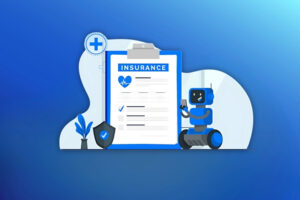Executive Summary: Premium leakage represents a $1.2 billion annual drain on insurance industry profits—a silent hemorrhage that most carriers systematically underestimate. For executives managing razor-thin margins and investor pressure, this isn’t just an operational inefficiency; it’s a strategic crisis demanding immediate action.
The Hidden Crisis Reshaping Insurance Profitability
While insurance executives obsess over catastrophic losses and market volatility, a more insidious threat operates beneath the surface. Premium leakage—the systematic under-collection of earned premiums due to misclassification, underreported exposure, and fraudulent submissions—is quietly eroding profit margins at an unprecedented scale.
The Stark Financial Reality
Industry Impact Assessment:
- $1.2 billion in annual industry-wide premium leakage
- 8-12% average leakage rate for mid-tier carriers
- 23% year-over-year increase in leakage incidents
For context, this leakage rate exceeds the profit margins of most publicly traded carriers:
Mid-Market Carrier ($500M annual premiums):
- Conservative 8% leakage = $40M unrecovered revenue annually
- Aggressive 12% leakage = $60M unrecovered revenue annually
- Equivalent to the profit contribution of 200-300 policies
Regional Carrier ($1.2B annual premiums):
- Conservative 8% leakage = $96M unrecovered revenue annually
- Often exceeds entire annual profit target
A $750M regional carrier recently discovered that premium leakage was responsible for their inability to meet quarterly earnings projections for three consecutive quarters. The $52M in annual leakage exceeded their targeted profit margin by 40%, forcing them to explain to analysts why their combined ratio consistently exceeded industry benchmarks.
Industry Trends Amplifying the Crisis
1. Digital Transformation Paradox
Insurance carriers have invested billions in digital transformation, yet these initiatives have systematically reduced human oversight at critical premium collection points.
Specific Impact Analysis:
- 73% of commercial policies now originate through self-service platforms
- 45% reduction in underwriter interaction over three years
- 23% increase in classification errors due to limited business descriptions
Real-World Case Study: A major regional carrier implemented a “streamlined” digital application process that reduced application time from 45 minutes to 12 minutes. While customer satisfaction improved dramatically, premium leakage increased by 31% over 18 months. The simplified interface eliminated critical questions about secondary operations, seasonal workforce variations, and equipment classifications.
2. Economic Pressure Points
Businesses facing inflation and supply chain disruption are systematically underreporting exposure as survival mechanisms.
Construction Industry Impact:
- Material cost increases of 40-60% since 2020
- Contractors systematically underreporting payroll to manage premium costs
- Average underreporting: 15-25% of actual exposure
Quantified Impact Example: A $850M carrier discovered that 67% of contractors were reporting 2019-2020 payroll figures in 2024 applications. The average underreporting was 22%, representing $12.3M in annual premium leakage.
3. Business Model Evolution
Traditional classification systems cannot capture modern business complexity.
Technology Companies: Software development + hardware manufacturing + fulfillment operations—but traditional classification captures only software development risk, missing 35-40% of appropriate premium.
Enterprise Example: A “consulting firm” operating advanced drone manufacturing facilities maintained professional services classification for three years, paying $847,000 annually instead of the appropriate $1.4M for manufacturing operations.
Executive Pain Points: The Real Cost of Inaction
For CFOs: Margin Compression Crisis
With combined ratios hovering near 100%, premium leakage directly impacts shareholder value. A 2% reduction in premium leakage for a $1B carrier equals $20M in recovered revenue—often exceeding annual cost reduction initiatives.
Real CFO Impact: The CFO of a $650M regional carrier faced three consecutive quarters of missing earnings projections. Forensic audit revealed $31M in annual premium leakage—representing 67% of the earnings shortfall.
For Heads of Audit: Resource Allocation Nightmare
The Impossible Equation:
- Industry-wide 15% auditor shortage
- Policy complexity increased 25% over three years
- Only 15-20% of policies receive comprehensive audit review
- Rushed audits miss 40% of classification errors
For Chief Risk Officers: Accumulation Blindness
Misclassified policies create false confidence in portfolio diversification while masking dangerous risk accumulations.CRO Risk Case: A CRO discovered that 47 “consulting firms” in a major metropolitan area were actually advanced manufacturing operations with significant CAT exposure. These policies represented $127M in total insured value, all classified as low-risk professional services. The combined exposure exceeded the carrier’s single-event limit by 240%.
The Four Critical Leakage Failure Points
1. Classification Engine Failures (35% of Total Leakage)
The Root Cause: Traditional classification systems rely on outdated NAICS codes and limited business descriptions that cannot capture operational complexity.
Technology Sector Example: A “software consulting” company maintained professional services classification while operating a 50,000 square foot manufacturing facility producing IoT hardware. Annual premium: $127,000. Appropriate manufacturing classification: $340,000. The $213,000 annual shortfall was discovered only after a product liability claim.
Industry-Specific Leakage Rates:
- Technology: 28-35% average leakage due to hybrid operations
- Construction: 22-31% average leakage due to specialization complexity
- Manufacturing: 18-25% average leakage due to process evolution
2. Exposure Underreporting (30% of Total Leakage)
Systematic Problem: Businesses provide outdated, incomplete, or intentionally misleading exposure information.
Construction Payroll Case: A commercial contractor reported $2.4M annual payroll while actual operations supported $3.8M in annual wages. The underreporting included seasonal workforce expansion (+$847,000), equipment operator reclassification (+$312,000), and subcontractor inclusion (+$267,000). Total annual premium shortfall: $89,000.
Manufacturing Facility Case: A “consulting firm” reported 12,000 square feet of office space while operating 47,000 square feet of combined office and manufacturing facilities, including $4.2M in unreported equipment value. Annual premium shortfall: $156,000.
3. Operational Drift (25% of Total Leakage)
The Evolution Challenge: Businesses continuously evolve without updating coverage.
Technology Services Evolution Timeline:
- Month 0-6: Pure consulting services, $23,000 annual premium
- Month 7-12: Added product development, +15% risk impact
- Month 13-18: Added manufacturing facility, +340% risk impact
- Month 19-30: Added fulfillment operations, final appropriate premium: $287,000
Geographic Expansion Impact: A regional construction contractor expanded from Ohio to five states over 18 months. Original premium: $127,000. Appropriate multi-state premium: $389,000. Premium shortfall: $262,000 annually.
4. Fraudulent Misrepresentation (10% of Total Leakage)
Sophisticated Classification Fraud Case: A chemical manufacturing operation established multiple subsidiaries to disguise operations. Primary corporation reported as “business consulting” with $34,000 annual premium. Actual integrated operations required $467,000 premium—fraud impact: $433,000 annual avoidance.
Why Traditional Audit Methods Systematically Fail
Timing Disadvantage
- Year-end audits discover issues after full exposure period
- Recovery rates drop 60% for issues identified beyond 6 months
Resource Constraints
- 15% industry auditor shortage while policy complexity increases 25% annually
- Annual audit cycles miss mid-term operational changes
Technology Limitations
- Rule-based systems cannot adapt to evolving business models
- Data scattered across multiple systems without integration
Competitive Advantage: Leaders vs. Laggards
Market Performance Gap:
- Top Quartile Carriers: Deploy AI-powered audit intelligence, recovering 85% of premium leakage
- Bottom Quartile: Rely on traditional methods, recovering less than 30% of leakage
Competitive Gap: Leaders maintain 4-6 percentage point combined ratio advantage
Strategic Implementation: Enterprise Transformation Case Study
Baseline Challenge – Mid-Market Carrier:
- $750M annual premiums
- 12% estimated leakage ($90M annual loss)
- 8-person audit team handling 2,000+ commercial policies
- 18-month audit cycle
AI-Powered Solution Implementation Timeline:
- Month 1-3: Deploy classification engine and KYC agents
- Month 4-6: Integrate continuous monitoring capabilities
- Month 7-12: Full implementation with human-in-the-loop oversight
Measurable Outcomes:
- 85% leakage recovery: $76.5M in additional premium revenue
- 60% audit efficiency gain: Team handles 3,200+ policies with same resources
- Early detection: Issues identified within 30-60 days vs. 12-18 months
- ROI Achievement: 12:1 return on technology investment within first year
The Future of Insurance Audit Intelligence: From Compliance to Profit Engine
The insurance industry stands at an inflection point. Premium audit is evolving from a regulatory compliance function into a sophisticated profit optimization engine that drives competitive advantage. This transformation represents more than technological upgrade—it’s a fundamental reimagining of how carriers identify, price, and manage commercial risk.
The Strategic Evolution: Traditional audit functions focused on regulatory adherence and historical validation. Tomorrow’s audit intelligence operates as a continuous revenue optimization system, identifying profit opportunities in real-time while ensuring compliance as a natural byproduct. This shift transforms audit departments from cost centers into profit contributors that directly impact shareholder value.
Digital Transformation Context: Insurance carriers have invested heavily in digital customer experiences, automated underwriting, and cloud infrastructure. Yet most have overlooked the transformational potential of audit intelligence. While competitors focus on front-end digital experiences, market leaders are deploying advanced audit intelligence to capture the premium value that digital transformation has inadvertently obscured.
Agentic AI: The Technology Foundation That Changes Everything
The breakthrough in audit intelligence comes from agentic AI—artificial intelligence systems where multiple specialized agents work collaboratively to solve complex problems. Unlike traditional rule-based automation or single-function AI tools, agentic AI creates intelligent systems that can reason, adapt, and improve over time.
Why Agentic AI Transforms Audit Intelligence:
Collaborative Intelligence Architecture: Multiple AI agents operate simultaneously—Classification engines analyze business complexity, KYC agents verify operational details through external data sources, risk assessment agents detect operational changes, and anomaly detection agents identify fraud patterns. Each agent contributes specialized intelligence while the system orchestrates comprehensive audit insights.
Adaptive Learning Capabilities: Traditional audit systems follow static rules that become obsolete as business models evolve. Agentic AI systems learn from each audit interaction, continuously improving classification accuracy and detection capabilities. This adaptive intelligence means the system becomes more effective over time, not less.
Human-in-the-Loop Excellence: Agentic AI augments human expertise rather than replacing it. AI agents handle data collection, pattern recognition, and routine analysis while human auditors focus on strategic risk assessment, relationship management, and complex decision-making. This collaboration delivers both scalability and accuracy that neither humans nor AI could achieve independently.Real-World Agentic AI Impact: A mid-market carrier deployed agentic AI audit intelligence and discovered that their human auditors could analyze 3x more policies while achieving 94% classification accuracy—compared to 67% accuracy with traditional methods. The AI agents handled routine verification tasks, allowing auditors to focus on high-value strategic analysis that directly contributed to revenue recovery and risk optimization.
Co-Creation: Accelerating Innovation Through Partnership
The complexity of insurance audit intelligence demands more than vendor-client relationships—it requires true co-creation partnerships that accelerate innovation while reducing implementation risk.
The Co-Creation Advantage:
Shared Investment in Success: Co-creation models align technology partners and insurance carriers around shared outcomes rather than project deliverables. This alignment ensures that innovation efforts focus on measurable business results—premium recovery, audit efficiency, and competitive advantage—rather than technical features that may not translate to business value.
Accelerated Development Cycles: Traditional vendor relationships involve lengthy requirements gathering, development cycles, and implementation phases. Co-creation partnerships enable rapid prototyping, iterative improvement, and accelerated time-to-value. Carriers can begin realizing audit intelligence benefits within months rather than years.
Industry-Specific Innovation: Insurance audit intelligence requires deep understanding of regulatory requirements, industry practices, and operational complexities. Co-creation partnerships combine technology innovation with insurance domain expertise, creating solutions that are both technologically advanced and operationally practical.
Risk Mitigation Through Partnership: Co-creation models reduce implementation risk by sharing responsibility for success. Technology partners invest in carrier outcomes, creating natural incentives for effective change management, user adoption, and measurable results. This shared accountability typically results in higher success rates and faster ROI achievement.
Strategic Partnership Benefits: Carriers engaging in co-creation partnerships don’t just implement technology—they participate in defining the future of audit intelligence. This strategic involvement creates competitive advantages that extend beyond immediate premium recovery to include market positioning, talent attraction, and innovation leadership within the insurance industry.
The Market Reality: Act Now or Fall Behind
Premium leakage represents the largest addressable profit opportunity in commercial insurance today. The carriers that recognize this opportunity first and deploy advanced audit intelligence will fundamentally reshape competitive dynamics across the industry.
The Strategic Imperative: Market leaders understand that premium leakage isn’t just an operational challenge—it’s a strategic differentiator. Carriers with superior audit intelligence can price more aggressively while maintaining higher margins, expand into complex commercial segments with confidence, and build sustainable competitive advantages that traditional carriers cannot replicate.
The Window is Closing: First-mover advantage in audit intelligence creates compounding benefits. Early adopters not only recover more premium revenue but also develop deeper market intelligence, stronger client relationships, and operational capabilities that become increasingly difficult for competitors to match. The question facing insurance executives isn’t whether to address premium leakage—it’s whether they’ll lead this transformation or watch competitors capture the value they’re currently leaving on the table.
The $1.2 billion question demands strategic action. The carriers that move decisively today will define tomorrow’s industry landscape.







